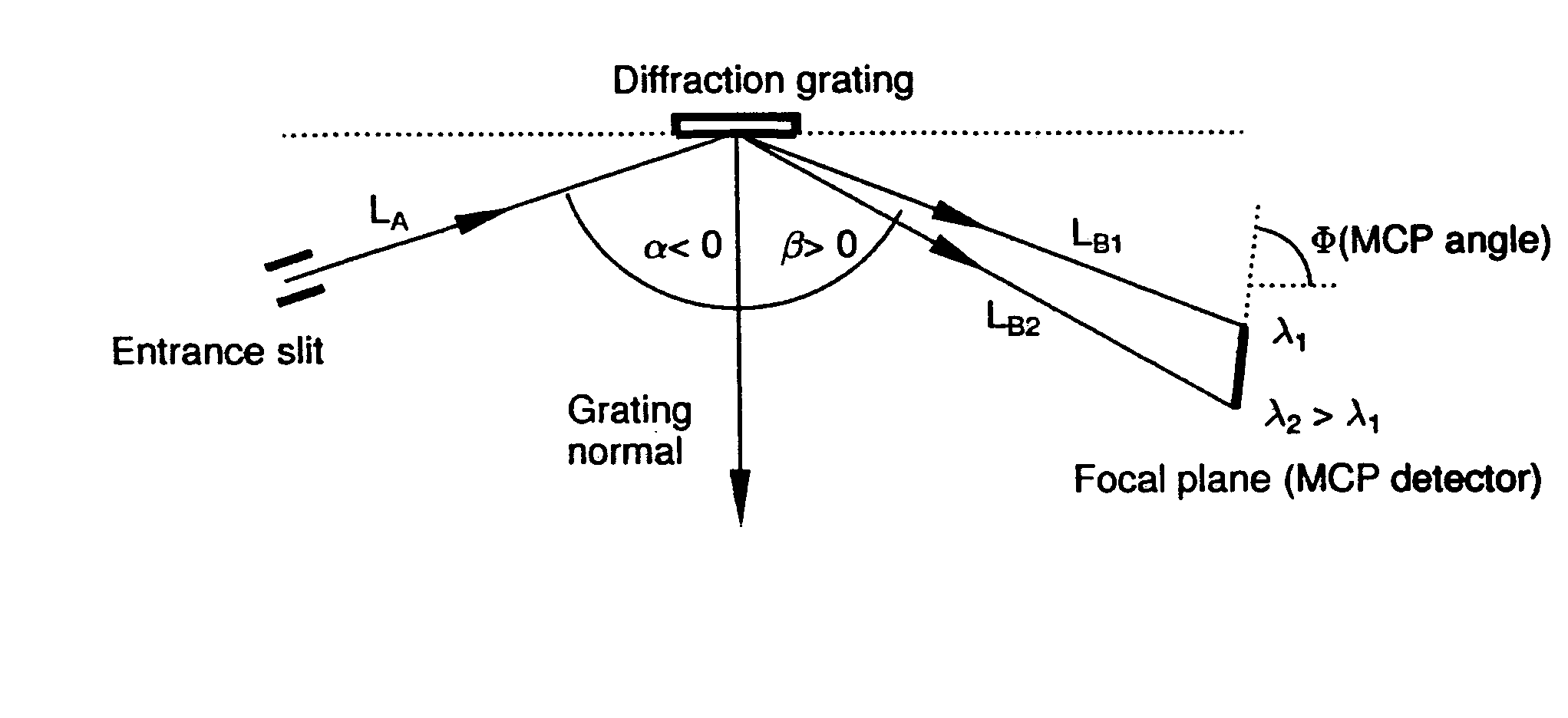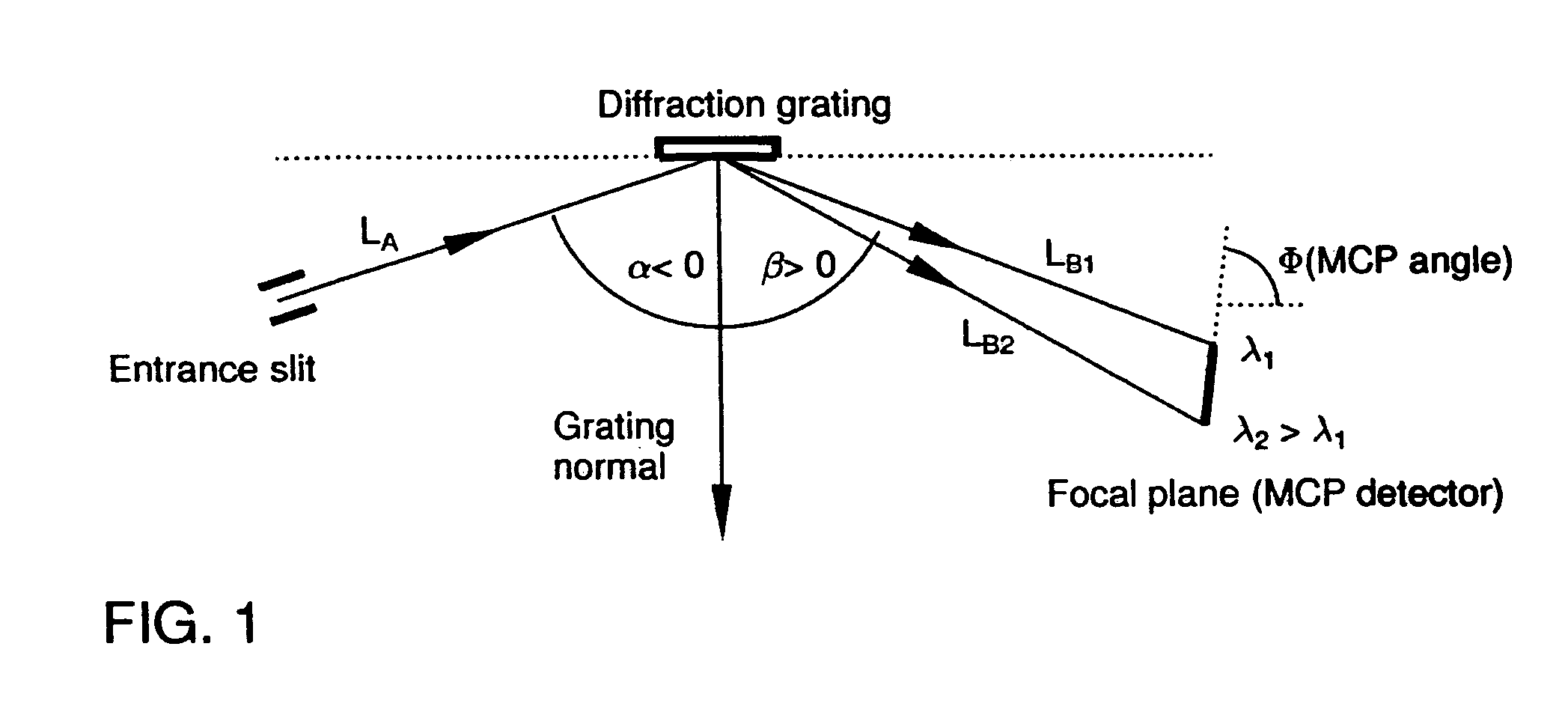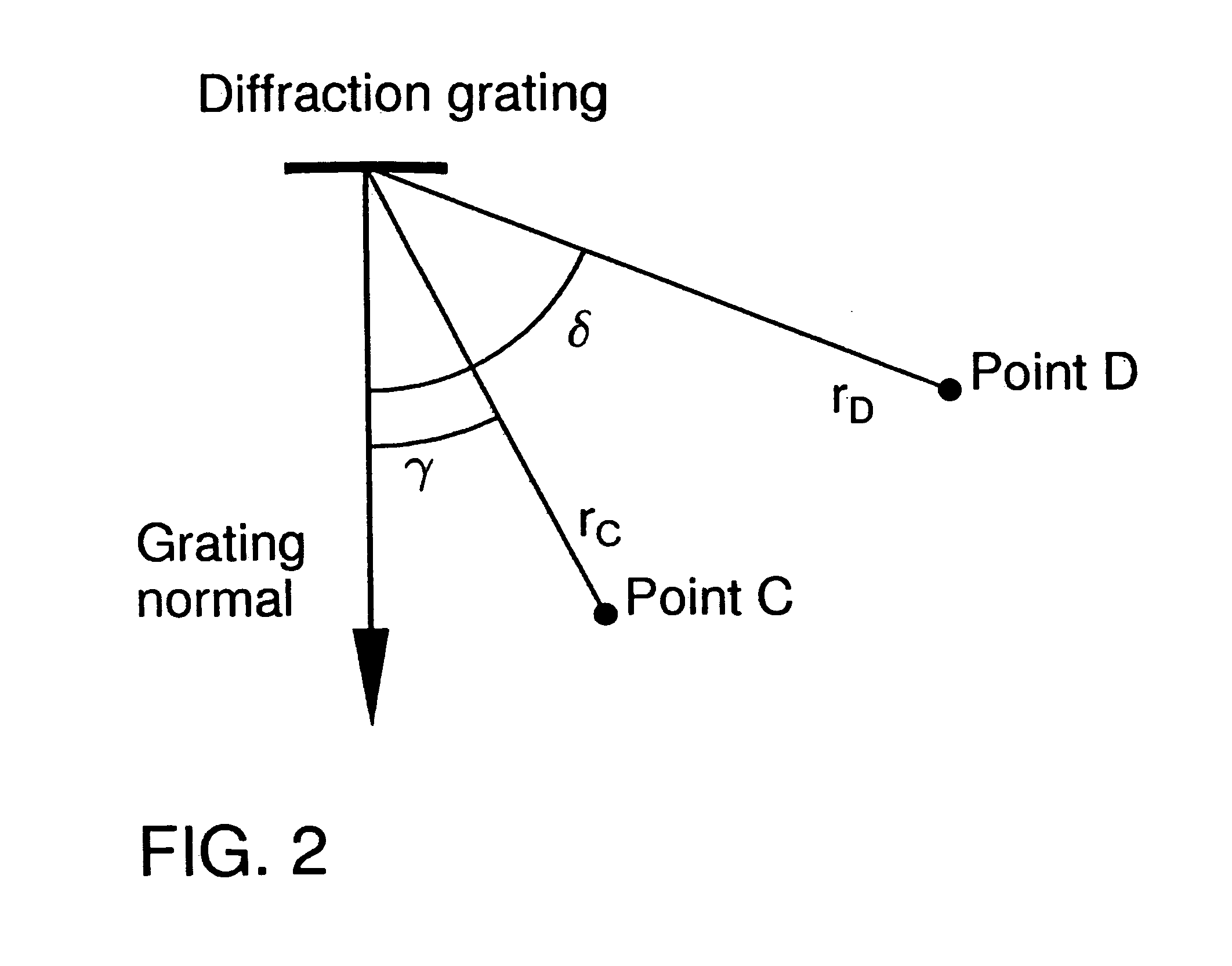Method for determining optimum grating parameters for producing a diffraction grating for a VUV spectrometer
a diffraction grating and optimal grating technology, applied in the direction of optical radiation measurement, instruments, spectrometry/spectrophotometry/monochromators, etc., can solve the problems of loss of resolution, reduced spectrometer efficiency, and inability to produce sharp images
- Summary
- Abstract
- Description
- Claims
- Application Information
AI Technical Summary
Benefits of technology
Problems solved by technology
Method used
Image
Examples
Embodiment Construction
[0102]Below the results of four grating designs have been set forth. The following definitions apply:[0103]A. Holographic grating parameter:[0104]R: Greater radius of the toroidal grating substrate[0105]ρ: Smaller radius of the toroidal grating substrate[0106]rc, rd: Spacing of the holographic illumination or exposure points from the grating origin[0107]γ, δ: Angular position or setting of the holographic illumination or exposure points to the grating normal[0108]λ: Laser wavelength[0109]B: Spectrometer parameters[0110]LA: Inlet gap / grating center point spacing,[0111]rso: Spacing from grating origin to meridional focus of zero order[0112]LB: Spacing of grating center point to detector,[0113]α: Incident angle of the radiation to the grating normal,[0114]β: Emergent angle of the beam to the grating normal,[0115]λ: Wavelength of the radiation within a previously defined wavelength range line density at the grating origin,[0116]MCP angle: Setting angle of detector relative to grating ta...
PUM
 Login to View More
Login to View More Abstract
Description
Claims
Application Information
 Login to View More
Login to View More - R&D
- Intellectual Property
- Life Sciences
- Materials
- Tech Scout
- Unparalleled Data Quality
- Higher Quality Content
- 60% Fewer Hallucinations
Browse by: Latest US Patents, China's latest patents, Technical Efficacy Thesaurus, Application Domain, Technology Topic, Popular Technical Reports.
© 2025 PatSnap. All rights reserved.Legal|Privacy policy|Modern Slavery Act Transparency Statement|Sitemap|About US| Contact US: help@patsnap.com



